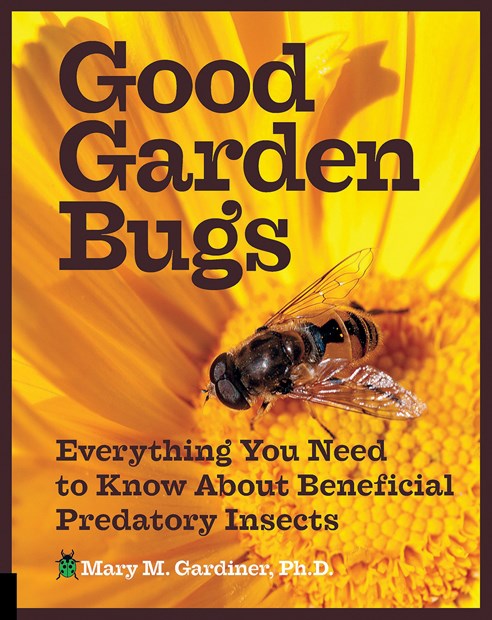- Good Garden Bugs, by Mary M. Gardiner, Quarry Books, 176 pages, $28.
They come in all manner of shapes, sizes and colours.
They fly, crawl, slither and march into your garden at will. They are the strange and often unrecognized insects that show up on your plants and make themselves at home.
While there are many nuisance bugs that eat the leaves of your favourite plant and generally wreak havoc wherever they appear, there are also a large number of predatory insects that will gladly take care of your problem for you.
The trick is knowing which one is which. This is where Mary Gardiner comes to the rescue with her detailed descriptions of a wide range of bugs you want to make friends with. Gardiner looks at lifecycles and eating habits of arthropods, insects that hunt for their own prey. Some, like the lady beetle, eat mainly pest insects while many varieties of spiders will prey upon both pests and beneficial insects.
There are planting recommendations for attractants such as dill, coriander and sweet alyssum that will bring in those natural predators, as well as suggestions for native plants that will offer local appeal to those insects.
Gardiner provides a look at an extensive selection of insects, each with a detailed description and photograph or illustration. From jumping spiders to assassin bugs there are many strange but helpful insects included that will be beneficial to the health of your garden.
---
- Grow a Living Wall, by Shawna Coronado, Cool Springs Press, 160 pages, $23. Two gardening concepts that appear on the surface to be in conflict turn out to work very well together.
Taking a small plot of land and growing vertically to increase the yield achieves the goal of being space-conscious and productive.
Shawna Coronado is an organic gardening advocate and encourages everyone to embrace gardening to make a sustainable contribution to the local environment.
She provides a detailed explanation of the living wall concept and how it can be incorporated into a wide variety of urban applications.
Coronado discusses the appropriate tools, planting techniques, containers, structures and attachments as part of her examination of how to create a living wall.
She goes on to discuss different types of living walls that can be created through specific planting, such as herbs, cactus, ferns or vegetables.
Filled with photographs to complement the step-bystep instructions, they will also serve as inspiration for some of the more unique arrangements.
By the end of the book you will appreciate that any wall or structure can be utilized for growing and you don't need a huge amount of space to start your own vertical garden.



